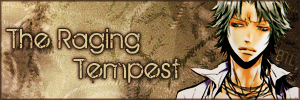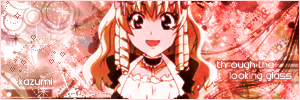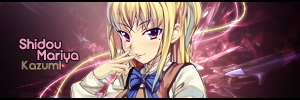|
Japanese Lesson 001
|
|
In this section you will cover How to read Hiragana, Katakana and be able to point out Kanjii, you will also learn some names (names are mostly written in kanjii and sometimes in Katakana, which can be annoying). In this section the english letters beside the hiragana and katakana characters are shown as how the character sounds. In the table below shows the hiragana and katakana characters (this is all Hiragana and Katakana characters, however you can create more letters from these which I will show at the end of this section) Hiragana Katakana A ã‚ ã‚¢ I ㄠイ U ㆠウ E ㈠エ O ㊠オ Ha 㯠ムBa 㰠ムPa ã± Hi 㲠ヒ Bi 㳠ビ Pi ã´ Fu 㵠フ Bu 㶠ブ Pu ã· He 㸠㸠Be ã¹ ã¹ Pe 㺠Ho 㻠ホ Bo 㼠ボ Po ã½ Ma 㾠マ Mi 㿠ミ Mu ã‚€ ムMe ゠メ Mo ã‚‚ モ Ta 㟠タ Da ã ダ Chi 㡠ムJi 㢠ヂ Tsu 㤠ツ Zu 㥠ヅ Te 㦠テ De 㧠デ To 㨠ト Do 㩠ド Ka ã‹ ã‚« Ga ㌠ガ Ki ã ã‚ Gi ㎠ギ Ku ã ク Gu ã ã‚° Ke 㑠ケ Ge 㒠ゲ Ko 㓠コ Go ã” ã‚´ Sa 㕠サ Za 㖠ザ Shi ã— ã‚· Ji 㘠ジ Su 㙠ス Zu 㚠ズ Se ã› ã‚» Ze 㜠ゼ So ã ソ Zo 㞠ゾ Na 㪠ナ Ni 㫠ニ Nu 㬠ヌ Ne ã ムNo 㮠ノ Ra ら ラ Ri ã‚Š リ Ru ã‚‹ ル Re ã‚Œ レ Ro ゠ムWa ゠ワ N ã‚“ ン Wo(o)ã‚’ (X) It's been brought to my attention :L as you may have noticed there is in face a character for wo but it is never used so it would just be another character to learn. The tsu repeating character: A small tsu character can appear in front of other characters, it repeats the first letter sound twice. For example ã£ãŸ (tsu ta) is now written as tta. See how the tsu character is smaller than the ta character, this is vital or else the character will be tsuta. The ya, yu and yo endings: Here are the ya, yu and yo characters in Hiragana - ã‚„ã€ã‚†ã€and よ. And in Katakana ヤ, ユ, and ヨ. By adding a miny version of any one of these characters to the end of any character ending in i you can create a new word observe: ã (ki) - ゃ (ya) - ãŽã‚ƒ (Kya) However this only works when the character is ending in i. These are the results of all the characters: Pya ã´ã‚ƒ Pyu ã´ã‚… Pyo ã´ã‚‡ Bya ã³ã‚ƒ Byu ã³ã‚… Byo ã³ã‚‡ Ja ã˜ã‚ƒ Ju ã˜ã‚… Jo ã˜ã‚‡ Gya ãŽã‚ƒ Gyu ãŽã‚… Gyo ãŽã‚‡ Rya りゃ Ryu ã‚Šã‚… Ryo りょ Mya ã¿ã‚ƒ Myu ã¿ã‚… Myo ã¿ã‚‡ Hya ã²ã‚ƒ Hyu ã²ã‚… Hyo ã²ã‚‡ Cha ã¡ã‚ƒ Chu ã¡ã‚… Cho ã¡ã‚‡ Sha ã—ゃ Shu ã—ã‚… Sho ã—ょ Kyo ãゃ Kyu ãã‚… Kyo ãょ Well you've completed your first section this is a hard section but not the hardest. In the next section you will learn about where things go in sentences. If you have any questions or want any other section contact me at: watashi@live.ie Be prepared for the next section - stay tuned!!! NEXT SECTION: BASIC GRAMMER |
|
Re: Japanese Lesson 001
Link |
by
 on 2011-04-18 07:28:33 (edited 2011-04-18 08:37:42)
on 2011-04-18 07:28:33 (edited 2011-04-18 08:37:42)
|
|
I'm pretty sure the katakana for "wo" is ヲ *Edit* Yeah I haven't found any use for ヲ yet either but it's there and there's a way to write it so it's better just to mention it than say there's no such thing xD 
|
|
Re: Japanese Lesson 001
Link |
by
|
|
Yeah, it should be that. I remember my former Japanese teacher would always say (and constantly repeat ==) that the katakana for "wo" is practically never used though. I've never seen it used myself so I'm going with it for now. @dam: Are you sure the small tsu does that? I always believed that it just made the next consanent uhhh.. "harder/sharper" (dunno how to describe) sounding, rather than "teta". o.O  |
|
Re: Japanese Lesson 001
|
|
ã£ãŸ doesn't generate (teta), it generates (tta). Example. 楽ã—ã‹ã£ãŸã€€is read as (tanoshikatta), not (tanoshikateta). :> |
|
Re: Japanese Lesson 001
|
|
I want to be the first one to thank you for actually making this thread. It will help people who want to learn Japanese. |
|
Re: Japanese Lesson 001
Link |
by
![[DA] ⤠devils-angel](http://img100.imageshack.us/img100/200/datar31.png) on 2011-04-18 09:58:29
on 2011-04-18 09:58:29 |
|
*moved to the Japanese section* - possible bookmark might help. Also it'd be nice to use scroll boxes to save space for larger/later added lessons (if all were to be made available via post #1). 
------- |
|
Re: Japanese Lesson 001
|
|
I was at work wen i was doin this so excuse the incompletion I really do nothing in my job :L |
|
Re: Japanese Lesson 001
Link |
by
 on 2011-04-29 10:39:50
on 2011-04-29 10:39:50 |
|
This is a really cool guide, thanks a lot damd666! |
|
Re: Japanese Lesson 001
|
Good guide here. 


 |
|
Re: Japanese Lesson 001
|
|
ヲ does have its occasional uses, but mostly when katakana is used instead of hiragana. Some games on systems from the old 8-bit and 16-bit era would do this (especially the ones geared towards children age 13 and younger) because the lack of graphical capability meant that katakana was easier to read at smaller font sizes than hiragana. Also, it's fairly common in manga to have characters who speak in some odd accent - e.g. robots and their stunted monotone, or foreigners who haven't completely gotten the hang of Japanese yet - use katakana where they should use hiragana, so you'll see ヲ fairly often in those settings. Ultimately, it's probably best to keep it memorized, just in case. The ones you shouldn't bother with are the wi/we kana, because those were never really in full use and are basically never used today. The only case I can think of where anyone has used either of those is Touhou Project's Inaba Tewi (å› å¹¡ã€€ã¦ã‚), where ZUN chose the archaic ã‚ kana in her name specifically to remind the reader that she's a lot older than she looks. |
|
Re: Japanese Lesson 001
Link |
by celiaorirene
on 2012-09-09 20:32:33
|
|
Thanks for the lesson! |
|
Re: Japanese Lesson 001
Link |
by
 on 2013-05-11 04:51:24
on 2013-05-11 04:51:24 |
|
Thanks! BTW What's the best way to memorize hiragana and katakana the fastest? |
|
Re: Japanese Lesson 001
Link |
by
|
|
SIH or SIA. maybe its Best if you really write it Like 5ã‚ 5ãˆã€€ï¼•ã„ 5ãŠã€€ï¼•ã† like that thats how i kinda Memorized it no i didn't memorize i just feel it XD    |





